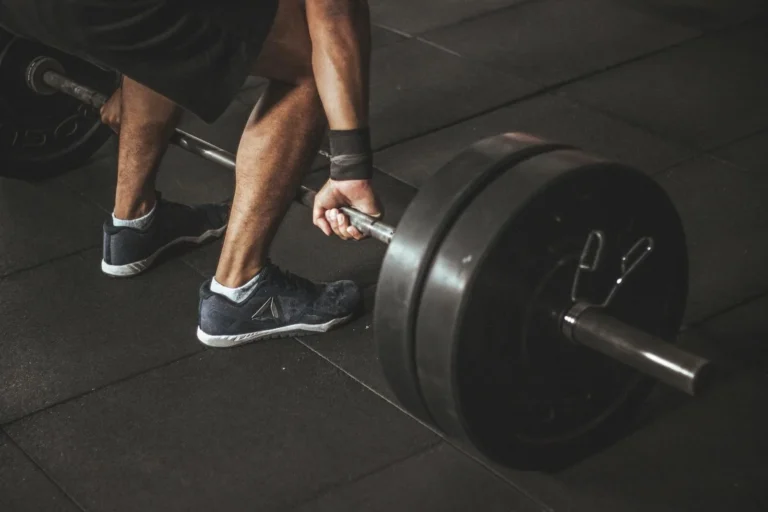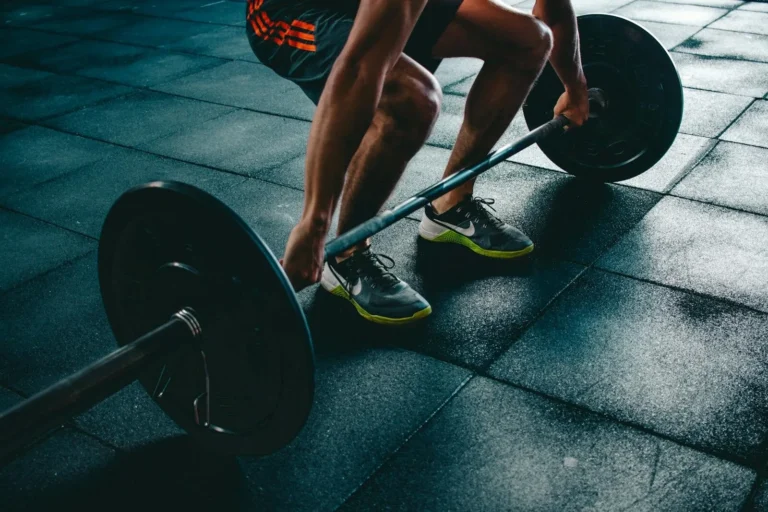It’s imperative to approach weight lifting with a plan to ensure your safety and effectiveness. You should begin by assessing your current fitness level and setting realistic goals. Always warm up before lifting to prepare your muscles and joints. Start with light weights to master your form and gradually increase the load as you gain strength. Consider working with a certified trainer to learn proper techniques, and don’t hesitate to ask for help if you’re unsure about any movements.
Key Takeaways:
- Consult a fitness professional to ensure proper technique and form.
- Begin with lighter weights to build a foundation and prevent injury.
- Incorporate a warm-up and cooldown routine to enhance safety and recovery.
Understanding Weight Lifting
Weight lifting is a systematic approach to resistance training that helps build muscle strength, improve endurance, and enhance overall fitness. You engage various muscle groups by using different types of weights, techniques, and routines aimed at promoting muscular adaptations. Starting gradually, understanding proper techniques, and using suitable weights are necessary to achieving your goals while minimizing the risk of injury.
Benefits of Weight Lifting
Incorporating weight lifting into your routine offers numerous benefits like increased muscle mass, improved bone density, and enhanced metabolic rate. Regular lifting can also boost your strength for daily activities and improve your overall body composition. You’ll find that even moderate lifting can significantly impact your health, both physically and mentally.
Common Types of Weights
Weight lifting utilizes various weights to suit different training levels and goals. Common types include dumbbells, barbells, kettlebells, resistance bands, and weight plates. Each type offers unique advantages for developing strength and muscle. Selecting the appropriate weights is necessary based on your fitness level and objectives.
| Dumbbells | Versatile and good for various exercises. |
| Barbells | Ideal for compound lifts and heavier weights. |
| Kettlebells | Great for full-body workouts and dynamic movements. |
| Resistance Bands | Portable and useful for rehabilitation and strength. |
| Weight Plates | Used to add resistance to barbells and other equipment. |
Choosing weights involves understanding each type’s role in your fitness journey. Dumbbells allow for isolation exercises, while barbells facilitate compound lifts. Kettlebells enhance power and endurance, and resistance bands introduce variable resistance for both strength and rehabilitation. Weight plates provide flexibility in customizing your lifting routine. Assume that selecting the right type will enhance your training efficiency and outcomes.
- Dumbbells for versatility in exercises.
- Barbells for heavy lifting and compound movements.
- Kettlebells for dynamic, full-body lifts.
- Resistance Bands for flexibility and rehabilitation.
- Weight Plates to customize resistance on various equipment.
| Dumbbells | Versatile and good for various exercises. |
| Barbells | Suitable for performing big lifts. |
| Kettlebells | Engaging core and improving grip strength. |
| Resistance Bands | Perfect for strength and corrective exercises. |
| Weight Plates | Allows for increased customization in lifting. |
- Dumbbells for isolation and flexibility.
- Barbells for foundational strength building.
- Kettlebells for power and endurance training.
- Resistance Bands for versatile conditioning.
- Weight Plates for increased challenge in workouts.
Preparing for Weight Lifting
Effective preparation lays the groundwork for a successful weight lifting routine. Start by ensuring you have the right equipment, including weights, a comfortable workout outfit, and supportive shoes. Create a workout space that is free of distractions and clutter. Incorporating a dynamic warm-up before lifting helps to make your muscles more pliable and ready to perform. A focused mindset will also enhance your motivation and performance during each session.
Setting Goals
Establishing clear and attainable goals is vital for tracking your progress in weight lifting. Consider what you want to achieve: whether it’s increasing strength, improving muscle tone, or enhancing overall fitness. Aim for SMART goals—specific, measurable, achievable, relevant, and time-bound. For example, aim to lift a certain amount of weight for a specific number of repetitions within a set timeframe, ensuring that you can monitor your advancements along the way.
Understanding Your Body
Familiarizing yourself with your body’s unique capabilities and limitations enhances your weight lifting experience. Every individual has different strengths, weaknesses, and recovery times influenced by factors like age, genetics, and prior fitness levels. Analyze your body by performing basic movements to identify areas of tension or discomfort. This self-awareness allows for better exercise selection and customization of your routine to prevent the risk of injury while optimizing performance.
Understanding your body includes recognizing your current fitness level and how it impacts your weight lifting journey. For instance, if you have a history of joint issues or muscle imbalances, choose exercises that accommodate those concerns. Utilize a fitness assessment, focusing on your range of motion and muscle strength, to clarify where adjustments are necessary. Pay attention to signals from your body, such as fatigue or pain, and use these cues to modify your regimen accordingly. Adaptation and self-awareness not only aid in safe lifting but can also accelerate progress toward your fitness aspirations.
Essential Equipment
Having the right equipment enhances your weight lifting experience and safety. Start with a good pair of athletic shoes that offer stability and support. A weightlifting belt can help maintain proper posture and prevent injury during heavy lifts. Resistance bands and a foam roller are excellent additions for warm-ups and recovery. Finally, consider a gym bag to keep all your vital gear organized and easily accessible.
Choosing the Right Weights
Select weights that challenge you without compromising your form. Beginners often benefit from starting with lighter dumbbells or kettlebells, typically between 5 to 15 pounds. Focus on performing exercises correctly before moving to heavier weights. As you progress, you can gradually increase the weight in small increments, usually 2.5 to 5 pounds at a time, to avoid injuries.
Safety Gear and Accessories
Safety gear protects you from injuries while lifting. Use wrist wraps to support your wrists during overhead lifts and weightlifting shoes designed to offer a stable base with proper grip. A lifting belt provides additional back support, especially in squats and deadlifts, while gloves can enhance your grip and prevent blisters.
Adequate safety gear enhances your lifting routine significantly. Quality wrist wraps can stabilize your joints during heavy lifts, while weightlifting shoes provide the necessary grip and support. A lifting belt helps maintain your core stability and proper posture, especially for complex movements. Using gloves not only improves your grip but also protects your hands from calluses. Investing in these accessories promotes confidence and reduces the risk of injury as you challenge your strength capacity.
Proper Techniques and Form
Mastering proper techniques and form is necessary for effective weight lifting. Start with lighter weights to focus on your movements and avoid injury. Maintaining a neutral spine, engaging your core, and aligning your joints correctly will enhance balance and stability during exercises. Poor form can lead to strain, making it vital to observe your posture in every lift. Consider using mirrors to check your alignment or ask a trainer for feedback, ensuring you build a solid foundation for your lifting journey.
Warm-Up and Stretching
A thorough warm-up increases blood flow to your muscles and enhances flexibility, reducing the risk of injury. Spend 5 to 10 minutes doing dynamic stretches, such as arm circles or leg swings, followed by light aerobic activities like jogging or jumping jacks. This gradually prepares your body for the demands of weight lifting and can significantly improve your overall performance.
Key Lifting Techniques
Utilizing key lifting techniques ensures you lift safely and effectively. Start by positioning your feet shoulder-width apart and maintaining a firm grip on the weights. Focus on keeping your elbows tucked and driving through your heels. For upper body exercises, retract your shoulders to protect your back. Each lift should involve controlled movements—lifting and lowering weights should take the same amount of time to minimize momentum, allowing your muscles to do the work.
Incorporating techniques such as the deadlift, squat, and bench press effectively engages multiple muscle groups. During a deadlift, your feet should be flat, with your weight distributed evenly, while your back remains straight. In squats, ensure your knees don’t extend beyond your toes, allowing for proper mechanics and protection against strain. Bench presses require you to maintain a stable grip on the barbell, with your feet planted firmly on the ground, ensuring your back stays in contact with the bench throughout the lift. Practicing these movements with lighter weights before increasing resistance will solidify your form and build confidence. Adjust weights to avoid overexertion and prioritize safety.
Creating a Weight Lifting Routine
Establishing a consistent weight lifting routine helps you stay dedicated and track progress effectively. Start with a balanced schedule that includes major muscle groups, allowing for adequate recovery time. Aim for at least three sessions per week, incorporating compound movements like squats, deadlifts, and bench presses. Vary your exercises weekly to prevent plateaus and maintain motivation. Document your lifts to monitor improvements over time, ensuring your routine evolves as your strength does.
Beginner-Friendly Workouts
Beginner-friendly workouts often center around bodyweight exercises and light weights to build a solid foundation. Exercises such as push-ups, lunges, and rows can enhance your technique without overwhelming your muscles. Gradually integrate weights into these movements, focusing on form over intensity. Start with a full-body workout three times weekly, allowing your body to adapt while developing strength and confidence.
Progression and Scaling
Progression and scaling are vital to advancing in weight lifting, as they prevent stagnation and reduce injury risks. Incrementally increase weights, typically by 5-10% once you can comfortably complete your sets. Adjust the number of repetitions and sets as needed; for example, shift from 3 sets of 10 repetitions to 4 sets of 8 as you gain strength. Utilize tools like training logs to track your progress, which also aids in motivation and accountability.
Implementing progression and scaling in your routine ensures continuous growth without compromising safety. For instance, if you can complete three sets of 12 with ease, consider increasing the weight or adjusting repetitions to challenge your muscles appropriately. It’s also beneficial to incorporate deload weeks—periods where you reduce weights and volume—to allow for recovery and prevent burnout. This approach enhances long-term success and keeps your workouts engaging and effective.
Safety Guidelines
Prioritizing safety during weight lifting is crucial to prevent injuries and ensure long-term success. Always warm up before starting your routine, using dynamic stretches to prepare your muscles. Maintain control of weights and avoid sudden, jerky movements. Use spotters or safety equipment, like collars, to secure weights, and listen to your body—if something feels wrong, stop immediately.
Avoiding Injuries
Focusing on proper form is your best defense against injuries. Avoid lifting weights that are too heavy until you are confident in your technique. Incorporate rest days into your routine to allow your muscles to recover, as fatigue can lead to poor form and increased risk of injury.
When to Seek Professional Help
Consult a fitness professional if you experience persistent pain, difficulty maintaining form, or if you are unsure about starting a program. A certified trainer can provide customized guidance, ensuring your routine aligns with your goals while minimizing injury risk.
Further, if you find yourself unable to perform basic movements without discomfort, seek an evaluation. Conditions like tendinitis or muscle strains often require specialized treatment. A trainer can not only help refine your technique but also develop a tailored program that addresses your specific needs. Additionally, consider consulting a healthcare professional for any underlying health concerns that may affect your lifting capabilities.
To wrap up
As a reminder, starting weight lifting safely involves a few important steps. Begin with a thorough warm-up to prepare your muscles and joints. Choose weights that allow you to maintain proper form throughout your exercises. Gradually increase intensity as your strength improves, and always listen to your body to avoid injury. Incorporate rest days to allow for recovery, and consider consulting a fitness professional for personalized guidance. Adopting these practices will ensure a safe and effective introduction to weight lifting.
FAQ
Q: What equipment do I need to start weight lifting safely?
A: To start weight lifting safely, you will need basic equipment such as dumbbells or a barbell set, a weight bench, and a gym mat. Additionally, consider using weightlifting gloves and a weightlifting belt for extra support.
Q: How can I ensure proper form while lifting weights?
A: To maintain proper form while lifting weights, begin with lighter weights to master the technique. Use mirrors or record yourself to check your posture. It’s also helpful to seek guidance from trainers or instructional videos focusing on form.
Q: What is a safe way to progress in my weight lifting routine?
A: Progress in weight lifting safely by increasing weights gradually, typically no more than 5-10% per week. Incorporate a mix of different exercises and ensure adequate rest between sessions to allow for recovery and avoid injury.
















































